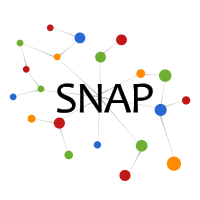Tissue-specific protein-function associations
Dataset information
This is a collection of protein-function association networks for a large number of human tissues. Nodes represent human proteins, tissues, and biological functions. Edges represent associations that indicate different biological roles of proteins in various tissues and cell types.
| Dataset statistics | |
|---|---|
| Nodes | 2564 |
| Edges | 18104 |
| Nodes in largest SCC | 2564 |
| Fraction of nodes in largest SCC | 1.000000 |
| Edges in largest SCC | 18104 |
| Fraction of edges in largest SCC | 1.000000 |
| Average clustering coefficient | 0.000000 |
| Number of triangles | 943127 |
| Fraction of closed triangles | 0.000000 |
| Diameter (longest shortest path) | 6 |
| 90-percentile effective diameter | 3.925416 |
| Average tissues per edge | 1.138920 |
| Median tissues per edge | 1 |
| Standard deviation of tissues per edge | 0.370247 |
The information on biological functions taking place in various tissues is determined based on manual curation and knowledge extracted from a tissue hierarchy. For example, 'low-density lipoprotein particle remodeling' is a biological function specific to blood plasma.
References
- Predicting multicellular function through multi-layer tissue networks. Marinka Zitnik and Jure Leskovec. Bioinformatics. 2017.
- Understanding multicellular function and disease with human tissue-specific networks. Greene, Casey S., et al. Nature Genetics. 2015.
- BRENDA in 2015: exciting developments in its 25th year of existence. Chang, Antje, et al. Nucleic Acids Research. 2014.
Files
| File | Size | Description |
|---|---|---|
| TFG-Ohmnet_tissue-function-gene.tsv.gz | 539KB | Tissue-specific protein-function associations (edgelist) |



